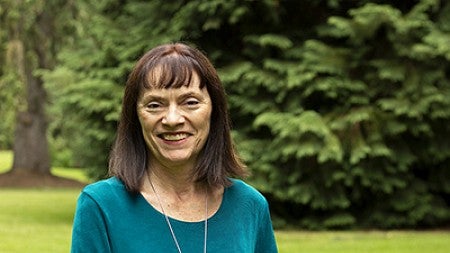
Anthropology
mmoss@uoregon.edu | 541-346-6076
Courses: ANTH 248 Archaeology of Wild Foods, ANTH 4/571 Zooarchaeology, ANTH 4/542 Northwest Coast Archaeology, ANTH 4/549 Cultural Resource Management, ANTH 4/543 North American Archaeology, ANTH 4/548 Gender and Archaeology
In my courses you will:
- Make connections to lived experiences and real-world challenges.
- Practice foundational, transferrable skills.
I was invited into the Teaching Academy because:
- I am a Herman Award Recipient.
- I am a Williams Fellow.
In what ways are you working to make your teaching inclusive?
In the first week of Archaeology of Wild Foods, I have each of my 100 students interview an older family member about what their diet was like when they were the student’s age. Students also ask about family food traditions and learn about what’s changed and what’s remained the same over the last 50 years. Here the students learn how their own families have traveled a unique trajectory over time related to their ethnic, geographic, and sociocultural backgrounds. By sharing these stories in section during Week 1, we dive right into the diversity represented in class. This exercise also serves as a point of departure for how diets and cooking have evolved over time, going back 500, 15,000, and even 2 million years ago.
I also try to learn as many first names of my students as possible. This year, I went to a few sections in Week 1 and by Week 2, and had learned about 20 names. This was a good start, and I learned about 50 names by the end of term. I am also unafraid to guess students’ names, and they seem to get a kick out of my efforts, even when unsuccessful. They know I care.
What do you do in terms of professional engagement with the teaching and learning culture on campus or nationally?
I have been going to TEP workshops for about 25 years. There is so much to learn and pedagogy has changed so much since I was in college. When I went to graduate school, there was no emphasis on teaching and I fumbled my way through my time as a teaching assistant. In recent years, I've been inspired by the teaching of colleagues Sierra Dawson and Mike Urbancic, who are masters at participatory learning. I've watched them in action, which has been both informative and inspiring.
In what ways was your teaching in this course research-led—informed by research on how students learn and inflected by UO's research mission?
The Archaeology of Wild Foods course was created through Backward Design. I introduced this practice to three graduate students in the spring of 2017, and we worked together to find readings and develop learning objectives. We probably read a dozen journal articles for each one we included in the course, which was first taught during fall of 2017. We now have over 100 specific learning objectives and all are aligned with readings, lectures, labs, and tests. I have one pre-class activity per week in the course. It’s been hard to train students to upload their assignments on time, but we are helping to build a foundation I hope is transferable to other courses in other disciplines. We use I-clicker questions to snap students out of passivity in class and occasional pair/share and 1-minute paper exercises. Students raise questions in every class, which I take as a good sign.
What is your favorite class to teach?
Even though it is challenging for me to teach a large class—I am at heart an introvert—The Archaeology of Wild Foods brings together so many aspects of my experiential knowledge that I find it rewarding to share it with others. My work as an archaeologist on the Northwest Coast has almost always involved working alongside Indigenous people. In 1974, I worked with Makahs at the Ozette site; I have worked with Tlingit and Haida many times in southeast Alaska, various tribes in Oregon, and more recently, I was able to work with Yup’ik at Nunalleq in southwest Alaska. As a zooarchaeologist I study animal bones in archaeological sites. I identify what species are present, how the animals have been obtained and processed, how they are cooked, and how their remains are deposited. I’ve learned how animal skins and bones are used to make shelter, boats, clothing and tools. By working with Indigenous people to document oral history and studying their practices, I’ve learned about animal behaviors through traditional ecological knowledge and better appreciate what wild foods mean to people today.
Students come to appreciate what Indigenous food sovereignty involves by considering how they would feel if their grocery shopping, cooking, or dining out was regulated by the state. I’m also able to show how my own research and that of colleagues helps provide a long-term perspective on fish and wildlife use that can assist biologists and managers today. As zooarchaeologists, we can document the times before the depletions of the industrial era and show how Alaska Natives, First Nations and Native Americans successfully and sustainably harvested animals.
At a more basic level, I take pride in teaching students how to pronounce First Nations names correctly, including Kwakwakw’wakw and Nuuchahnulth (groups who live on Vancouver Island in British Columbia). I am grateful for the knowledge shared with me, and I enjoy the opportunity to share it with introductory students.
